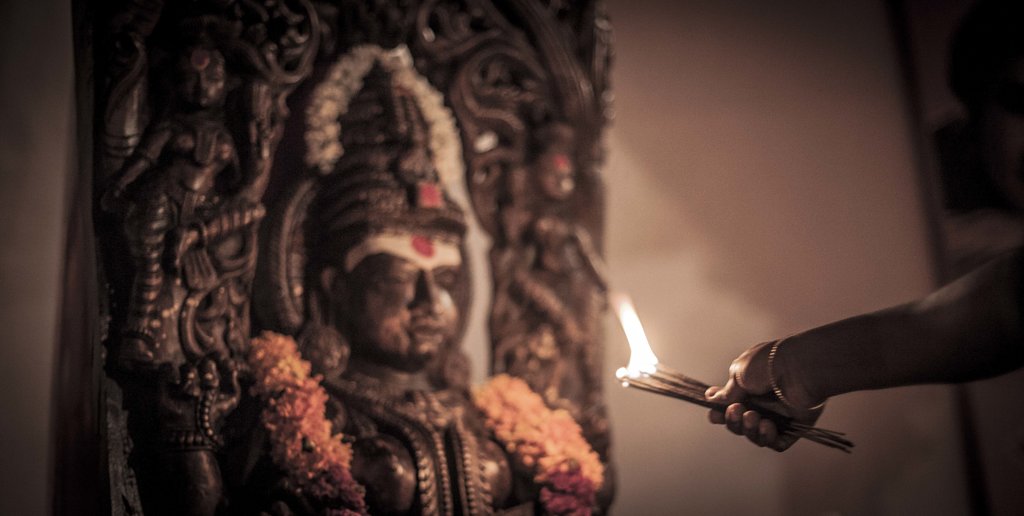
Third Eye Tour of India - 14 Days

Highlights
- Roll out your yoga mat on the banks of the sacred Ganges River in Rishikesh
- Explore Buddhism among the snow-capped Himalayas in Dharamsala
- Be amazed by the Golden Temple in Amritsar, the holiest shrine in Sikhism
- Experience the classic Golden Triangle from a sustainable tourism perspective
Brief Itinerary
| Day | Highlights | Overnight |
|---|---|---|
| Day 1 | Arrival in Delhi | Delhi |
| Day 2 | Delhi to Jaipur | Jaipur |
| Day 3 | Craft lesson in Jaipur | Jaipur |
| Day 4 | Jaipur to Agra | Agra |
| Day 5 | Agra to Delhi via elephant sanctuary | Delhi |
| Day 6 | Fly to Amritsar | Amritsar |
| Day 7 | Hills of Dharamsala | Dharamsala |
| Day 8 | Tibetan Buddhism in Dharamsala | Dharamsala |
| Day 9 | Trek Dharamsala | Dharamsala |
| Day 10 | Dharamsala to Haridwar | Haridwar |
| Day 11 | Spirituality in Rishikesh | Rishikesh |
| Day 12 | Ayurveda in Rishikesh | Rishikesh |
| Day 13 | Yoga in Rishikesh | Rishikesh |
| Day 14 | Depart to Delhi |
Detailed Itinerary
Day 1: Arrival in Delhi

Delhi is one of the most historical and vibrant cities on earth, a city of contrasts that is now divided into two zones: Old Delhi, which mostly consists of Mughal-era buildings, and New Delhi, constructed by the British.
Take a walk through Old Delhi to visit Gandhi’s graveyard, located near the lively district of Chandni Chowk, which is famous for its gold and silver merchants. Later, visit the narrow streets of Nizamuddin, the Sufi area in Delhi. Here, you will be guided by local youth to uncover the traditions, monuments, flavors, and history of this vibrant neighborhood that juxtaposes old and new, upscale residences and ancient tombs. Travelers and pilgrims flock to the Nizamuddin Dargah, the saint’s tomb, to hear qawwalis, or Sufi devotional songs, eat kebabs, and shop in the lively market.
Day 2: Delhi to Jaipur

Drive to Jaipur in the morning, then visit a rural community outside of Jaipur to experience the daily lives of rural Rajasthanis. Visit a community led by Jaimala and Hitesh, who for more than ten years have worked with youth from Rajasthan and artisan women to develop an ethical fashion project. Visit the school and small initiatives that play a part in making the community more self-sufficient, such as a biogas plant and an organic farm.
Tonight will be spent at a homestay in the local community (although accommodation in the city can be arranged if that is preferred.)
Day 3: Craft lesson in Jaipur

With the help of local artisan women, try your hand at block printing, one of the oldest printing techniques in India, and chat with the women about their lives.
In the afternoon there will be time to visit one of the amazing palaces or forts in Jaipur city, such as Amber Fort on the outskirts of town, or the spectacular City Palace.
Overnight stay in the community.
Day 4: Jaipur to Agra

Travel to Agra, the home of one of the world's greatest romantic icons, the Taj Mahal. The best times to visit are sunrise and sunset, as the sun turns the white marble beautiful hues. Visit in the evening.
Day 5: Agra to Delhi, via an elephant center

Get up early to see a rooftop sunrise over the Taj Mahal, and enjoy some pool time at the hotel.
On the way back to Delhi, stop at a café run by acid attack survivors, where you can read, relax, and interact with the women entrepreneurs. Further en route, visit an elephant rescue center and even have a chance to walk with them and bathe them.
Chat with a local specialist who can help organize your trip.
Day 6: Fly to Amritsar

Fly to Amritsar in the morning, the city that's home to the holiest shrine in Sikhism, the spectacular Golden Temple. Enjoy some peaceful time at this deeply spiritual place, where all are welcome.
In the evening, head to Wagah, a town on the India-Pakistan border where a military spectacle occurs every day as the border closes. India and Pakistan are intense rivals, and this ceremony epitomises this historical tensions.
Day 7: Head to the hills in Dharamsala

Leave the plains of Punjab and head to MacLeod Ganj/Dharamsala, which is known as little Tibet because it's the seat of the Tibetan government in exile and home to the Dalai Lama. Stay in a Tibetan Monastery and have free time on the day of arrival to take a walk around the beautiful valley and visit local crafts shops and Buddhist sites.
Day 8: Tibetan Buddhism in Dharamsala

Visit the Dalai Lama Temple and have the opportunity to accompany the Buddhist Monks in their daily activities, such as practicing deep meditation and debating Buddhist scriptures.
Day 9: Trek around Dharamsala

Take a trek in the Himalayas, starting in McLeod Ganj and ending at Triund, at 2900m/9214ft. It is a beautiful walk through mixed forests of deodar and oak trees, as well as rhododendron plants (which flower in the spring). Triund is situated on a ridge with a beautiful view of the whole Kangra Valley on one side, and the Dhauladhar mountain range on the other.
Day 10: Dharamsala to Haridwar, via Pathankot

Drive to Haridwar, at the foot of the Himalayas, then take an overnight train to Rishikesh, a spiritual town on the banks of the River Ganga.
Day 11: Spirituality in Rishikesh

Arrive by train in Rishikesh in the morning, and settle in for a few days. In the evening, witness the daily Ganga Aarti, or worship ceremony dedicated to the River Ganga.
Day 12: Ayurveda in Rishikesh

Experience traditional Ayurveda today, by receiving a lecture from an Ayurvedic doctor. Later, enjoy an Ayurvedic massage.
Days 13 & 14: Yoga in Rishikesh - Return to Delhi by train

Rishikesh is known as the international capital of yoga, and you'll get the chance to practice some on the banks of the sacred Ganges. Later, learn the principles of Ayurvedic nutrition in a home-based cooking class.
On your last day, transfer to Delhi by train.






